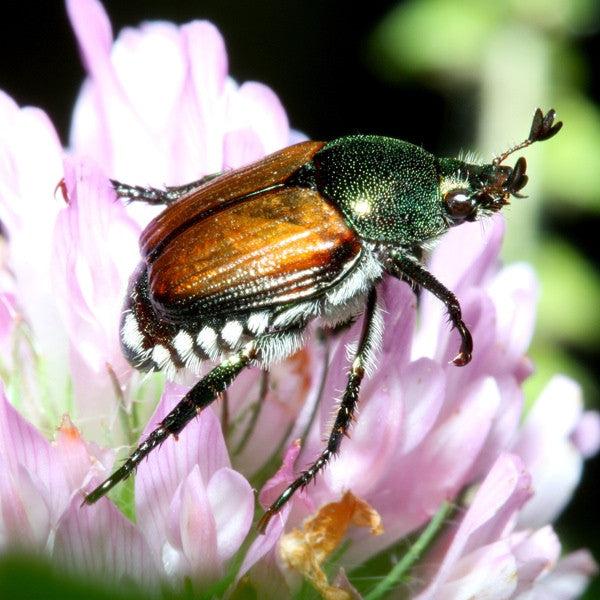Japanese Beetles (Popillia japonica) are really quite pretty (in fact, they will star in this week’s wallpaper), but they can do some serious damage in your garden. Growing up in South Carolina, these things were absolute terrors, moving around in vast hordes. The worst part of it was cleaning out the traps, which would be big plastic bags full of dead, decaying, and still-moving beetles all mixed together in a disgusting, twitchy mass. To get to said trap, of course, you had to move through the cloud of the little guys that weren’t nearly agile enough to not fly right into you. Not a pleasant experience.
Of course, now we know better (though it seems like it should have been obvious then). These pheromone-baited traps were pretty effective at killing the beetles, but not nearly as effective as they were at drawing them into our garden from miles around. These days it is recommended that the traps be set up well outside of the area that you want cleared of the beetles to try to draw them away from your delicate plants (especially roses. These things love roses). Now that we no longer use the traps, we find that Japanese Beetles are more of an occasional pest, though they can still shred a rose bush pretty well.
Japanese Beetles feed on the soft parts of leaves, skeletonizing the leaves and sometimes petals, leaving the veins behind. Certain aromatic plants do tend to drive them away, such as catnip and garlic, but how effective they really are is up for debate (though a garden without garlic is a confusing place to me, anyway). I prefer to just deal with Japanese Beetles by hand. When you see them, pick them off of the plant and kill them, easy peasy. They’re not exactly subtle creatures, nor are they adept at fleeing you, so it’s not hard to take care of them. You can also shake plants that have several of them on there to dislodge them, then pick up the fallen beetles to kill (this works best in the morning). Because they tend to attract each other, if you keep the population controlled to begin with by checking their favorite plants regularly (especially, again, roses), you should be able to avoid most problems with these pretty little pests.


